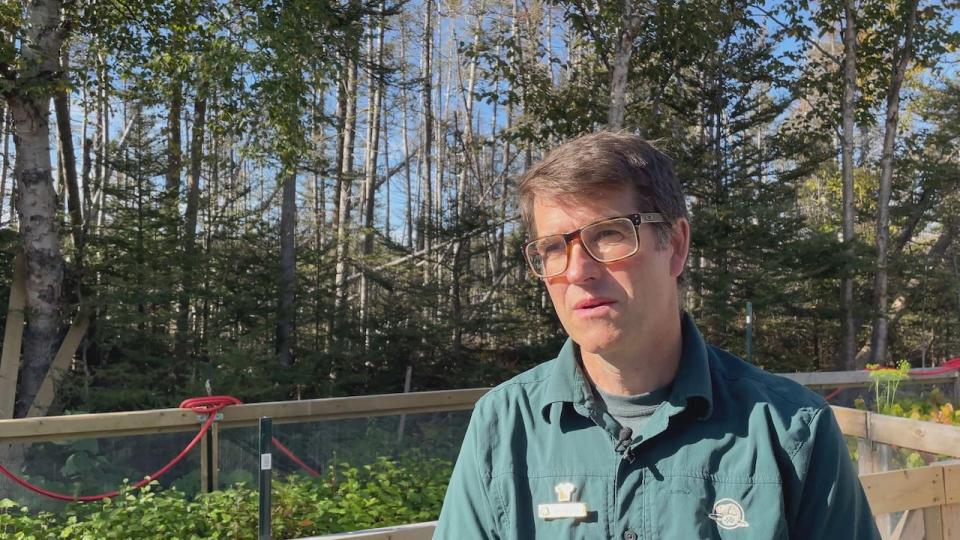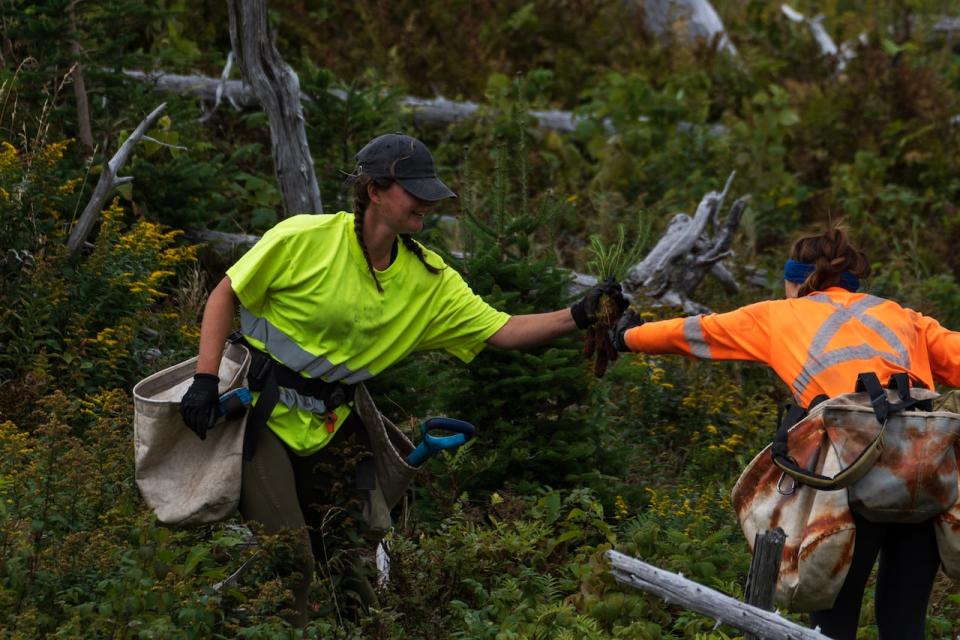
Darroch Whitaker, an ecologist with Gros Morne National Park, says moose munching on foliage has left the park in need of extra help. (Sanuda Ranawake/CBC)
A sprawling national park on Newfoundland’s west coast is on a mission to plant a million trees as moose continue to munch on foliage needed to keep the park’s ecosystem in balance.
This summer, Gros Morne National Park planted about a third of that number: over 300,000 trees, most of which were in remote backcountry locations only accessible by helicopter.
Darroch Whitaker, an ecologist with the park, says they’re focused on restoring sites where forest cover was lost due to overbrowsing by moose.
“In 2011, we started to moose hunt in the national park to reduce the moose population to a more sustainable level. We were successful at that by about 2016, 2017,” Whitaker told CBC News.
“People don’t picture hunting as a regular activity in a national park.”
Moose have few predators in Newfoundland, causing problems for the ecosystem. Plants started disappearing from the forest floor, leaving vast moose meadows where thick foliage once stood.
“Black bears will kill some young moose calves when they’re in the first couple of weeks of their life, they can do that. Maybe a really lucky coyote could do it as well. But really, moose are fairly free of predation,” he said.
After a few years of planning and looking for funding, the park created its tree planting program last year, getting 120,000 saplings in the ground.
This year, planting scaled up to 300,000 trees.


A worker hands over a tree to be planted to her coworker in a remote backcountry location in Gros Morne National Park. (Parks Canada / Parcs Canada)
“We’re going to try and do 300,000 again next year and keep it going for a few more years,” Whitaker said. Ideally, the the park wants to hit a million saplings to restore the ecosystem and help hit a national climate change target.
Trees take two years to go from seedling to a small shrub big enough to plant in the wild. Once planted in the wild, they still face some risks.
“Once they’re planted out in the outdoors, then they’re going to live their lives. And most of these trees will start becoming mature and reproducing at about 20 to 40 years of age,” Whitaker said.
“As these trees grow up, it will take 20 or 30 years for it to form what we call a closed-canopy forest.”
Whitaker says moose prefer to eat some plants over others. Hardwoods are among their favourites, while balsam fir and spruce are less liked.
The park is also involving local community members, handing out excess trees to community members and municipalities.
Download our free CBC News app to sign up for push alerts for CBC Newfoundland and Labrador. Click here to visit our landing page.

